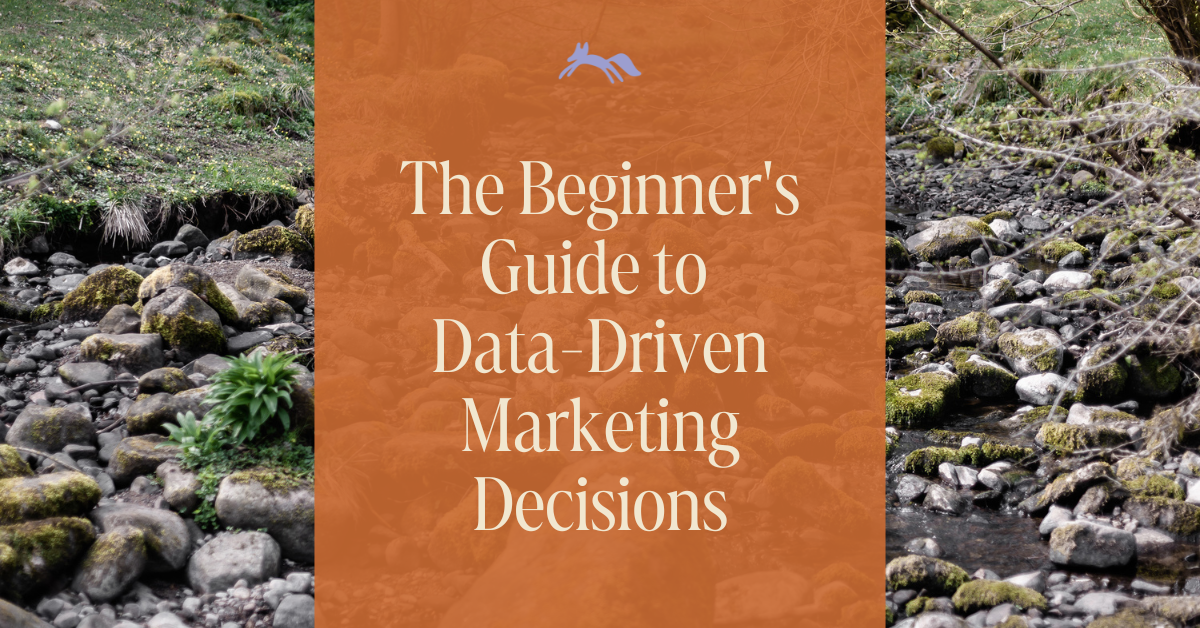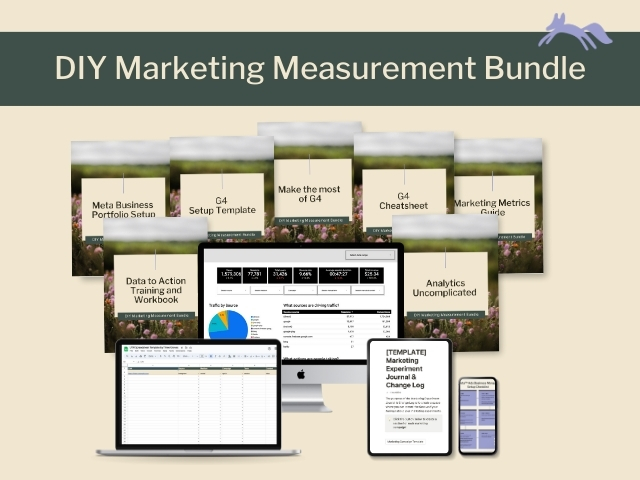Let me guess…
As a business owner, you are doing all the things – organic social media, blogging, writing emails, you might even be dabbling in paid ads a smidge.
But you feel a bit like you are throwing darts blindfolded… you aren’t exactly sure what’s working and what’s not.
If that’s you, I imagine it’s leaving you feeling a little deflated and unsure of what marketing moves to make next.
I’m here to tell you, friend, it doesn’t have to feel that way!
Marketing your business can feel fun, and dare I say it – simple!
Implementing data-driven marketing can be like having a GPS.
One that guides all of your decisions, so that you can build a business that fulfills your life.
What is data-driven decision-making in marketing?
Tableau says, “Data-driven decision-making (DDDM) is defined as using facts, metrics, and data to guide strategic business decisions that align with your goals, objectives, and initiatives”
Simply stated – data driven decision making in marketing is using facts, metrics, and data to guide your marketing decisions.
Decisions like
- How should I spend my marketing budget?
- Where should I spend my time marketing organically?
- What efforts provide a positive ROI on my energy?
4 Benefits of data driven marketing
We all want to make sure the things that we are spending our time on in our businesses are actually driving results!
The best way to do that? Make decisions based on data!
The power of data-driven marketing lies in the ability to make decisions based on FACTS, and not just feelings, or vibes, or how you think things are going.
Did that marketing experiment work? You’ll know because you’ll look at data to determine the answer!
Not only can you use your data to determine if a marketing effort is worth your time, you can also use marketing data to make decisions that will allow you to
- Increase customer personalization
It’s nice to feel like you are being listened to. Segment that email list, babe! Use marketing data (i.e. link triggers) to measure your customer’s behavior and give them the goods they want!
- Increase your cost effectiveness
I absolutely only want to be spending my hard earned cash on marketing strategies that work, and I know you do too! Use your marketing data to see what you are really spending when executing your marketing campaigns!
- Optimize your campaigns.
Who doesn’t want a higher conversion rate? Use your marketing data to answer questions like: What patterns do you notice? What isn’t driving website traffic? From there, how can you make tweaks to make that happen?
- Drive growth and profitability
Maybe growth is important to you? Cool, but I bet being profitable is MORE important! Use your marketing data to make data driven business decisions to ensure you are spending your time, money, and energy wisely!
How do I start using data to make marketing decisions?
In order to begin using data to make marketing decisions you first have to track it!
When you understand what facts you need to make better decisions you’ll understand which metrics you need to track in order to see those facts.
Not sure which market in metrics you be tracking! No worries — I gotcha!
You have
✅ a list of facts you need to make decisions
✅ metrics in order to see those facts
Now you need a simple system to collect and organize your data. A place to track the marketing efforts you are measuring.
The lovely thing about this is that you get to pick a system that works for your brain!
- Are you a spreadsheet girlie?
- Does Notion have your heart?
- Do stories make more sense to you?
- Need a visually appealing dashboard to put all the pieces together for you?
You’re moving along now! It’s time to turn your data into action!
What is an example of using data to make decisions?
I love to design a good marketing experiment, so let me give you some examples!
Experiment 1: Increase customer personalization
- During your product pre launch utilize a link trigger to apply a tag to customers who’d like to be on the waitlist for a product.
- Write Version 1 of your sales sequence and send it to those on the waitlist
- Use your waitlist open rates, click, and conversion rates to make iterations to the sales email sequence
- Send Version 2 of the sales email sequence to your entire list
Experiment 2: Increase your cost effectiveness
- Monitor lead cost and conversion rates from different platforms
- Use this data to allocate your budget appropriately
- Painting with extremely broad strokes – Maybe you are spending $1200 on a social media manager and $1200 on Meta Ads™
- Spend time in your data to understand what your cost per lead is for each source, and which lead source is converting.
Experiment 3: Optimize your campaigns.
- You’ve installed heatmapping software on your website
- You notice the people that are hitting the page aren’t making it to your call to action button
- You move your button up!
- Monitor the data, make one adjustment at a time as needed (maybe you change the color, maybe you change the button text)
Experiment 4: Drive growth and profitability
- You and your team are tracking their time for each client project
- You notice that you are spending a lot of time on one of your productized services
- You raise your prices incrementally until you land on a price that fits the market AND that is profitable for you.
- And/Or you more closely monitor where you are spending time so that you can adjust your standard operating procedures, if need be.
Making data driven marketing decisions is a cyclical process – collect, analyze, and turn your data into action.
If you aren’t sure the quickest way to get started implementing data-driven strategies I’m love to show you how
The DIY Marketing Measurement Bundle is a set of resources that will allow you to get started measuring your marketing so that you can feel confidence while making decisions related to your business.


leave a comment